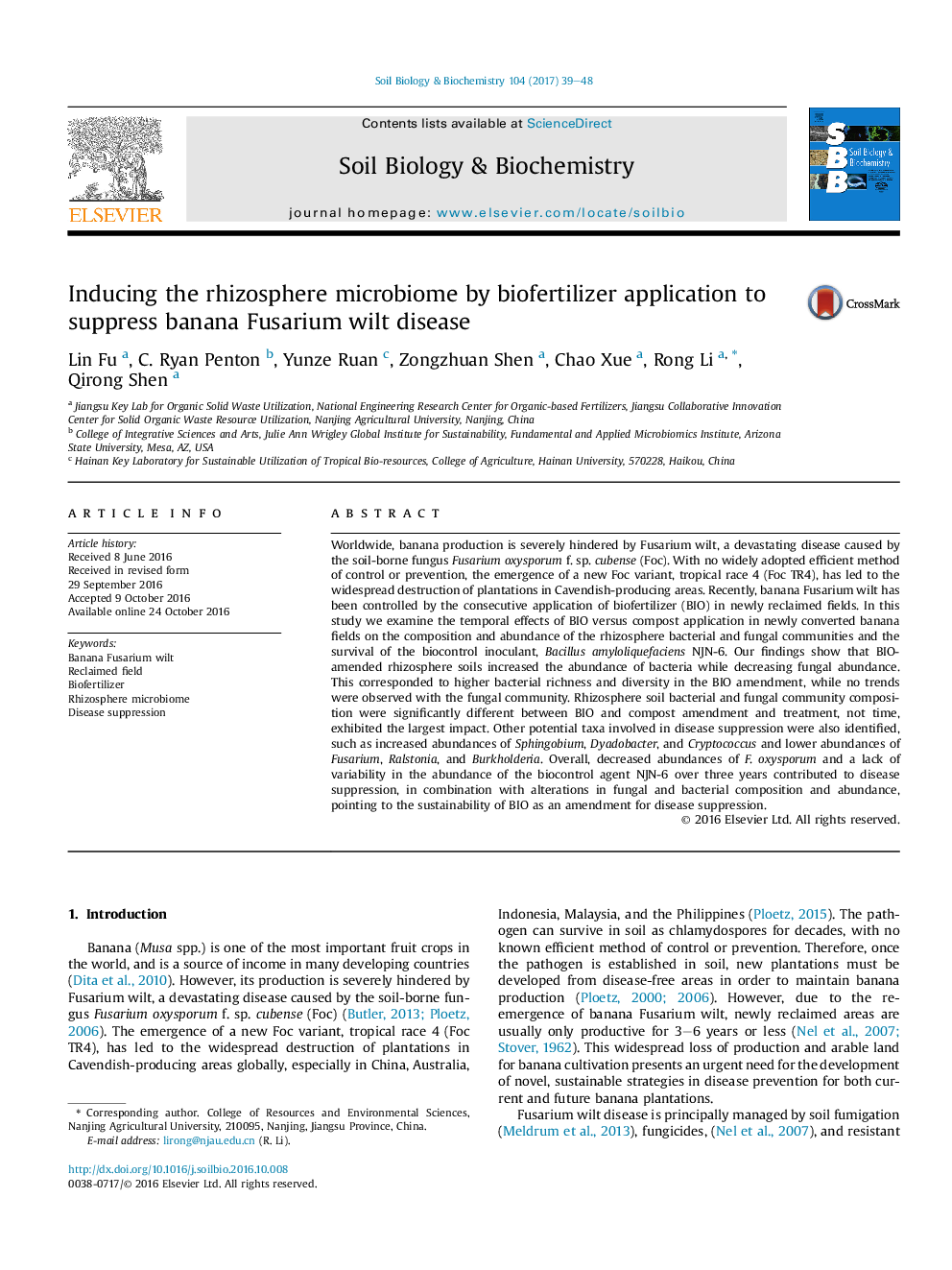| کد مقاله | کد نشریه | سال انتشار | مقاله انگلیسی | نسخه تمام متن |
|---|---|---|---|---|
| 5516446 | 1542580 | 2017 | 10 صفحه PDF | دانلود رایگان |
- Fusarium wilt disease was pre-controlled by biofertilizer (BIO) in reclaimed field.
- Higher bacterial richness and diversity were identified in BIO treated soils.
- Bacterial and fungal community composition was altered by BIO treatment.
- BIO application significantly reduced the abundance of Fusarium oxysporum.
- The inoculum Bacillus amyloliquefaciens NJN-6 exhibited little temporal variation.
Worldwide, banana production is severely hindered by Fusarium wilt, a devastating disease caused by the soil-borne fungus Fusarium oxysporum f. sp. cubense (Foc). With no widely adopted efficient method of control or prevention, the emergence of a new Foc variant, tropical race 4 (Foc TR4), has led to the widespread destruction of plantations in Cavendish-producing areas. Recently, banana Fusarium wilt has been controlled by the consecutive application of biofertilizer (BIO) in newly reclaimed fields. In this study we examine the temporal effects of BIO versus compost application in newly converted banana fields on the composition and abundance of the rhizosphere bacterial and fungal communities and the survival of the biocontrol inoculant, Bacillus amyloliquefaciens NJN-6. Our findings show that BIO-amended rhizosphere soils increased the abundance of bacteria while decreasing fungal abundance. This corresponded to higher bacterial richness and diversity in the BIO amendment, while no trends were observed with the fungal community. Rhizosphere soil bacterial and fungal community composition were significantly different between BIO and compost amendment and treatment, not time, exhibited the largest impact. Other potential taxa involved in disease suppression were also identified, such as increased abundances of Sphingobium, Dyadobacter, and Cryptococcus and lower abundances of Fusarium, Ralstonia, and Burkholderia. Overall, decreased abundances of F. oxysporum and a lack of variability in the abundance of the biocontrol agent NJN-6 over three years contributed to disease suppression, in combination with alterations in fungal and bacterial composition and abundance, pointing to the sustainability of BIO as an amendment for disease suppression.
Journal: Soil Biology and Biochemistry - Volume 104, January 2017, Pages 39-48
